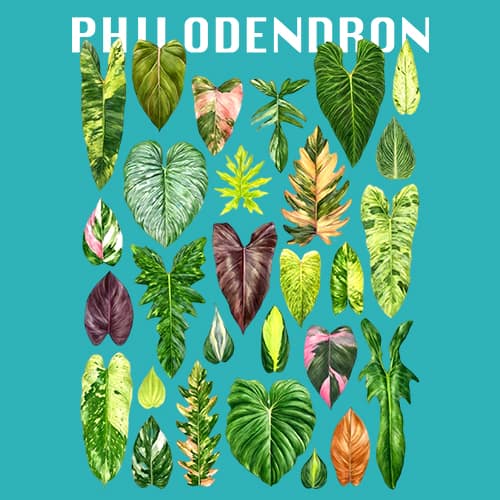Cyclamen (Cyclamen Persicum) is a charming and fragrant flowering plant that adds a touch of elegance to any indoor space. With its petite blooms in shades of pink, purple, red, and white gracefully rising above heart-shaped leaves, cyclamen is a favorite for both seasoned gardeners and those new to plant care. In this article, I’ll share essential information about cyclamen care, ensuring your plant thrives year after year.
Getting to Know Cyclamen
Common Name: Cyclamen, Florist’s Cyclamen, Persian Cyclamen, Persian Violet
Botanical Name: Cyclamen Persicum
Family: Primulaceae
Plant Type: Perennial
Mature Size: 6–9 in. tall, 6–9 in. wide
Sun Exposure: Partial
Soil Type: Loamy, moist, well-drained
Soil pH: Acidic
Bloom Time: Fall, winter, spring
Flower Color: Pink, white, red, purple
Hardiness Zones: 9–11 (USDA)
Native Areas: Mediterranean
Toxicity: Toxic to people, toxic to pets
Cyclamen Species
1. Cyclamen Africanum
2. Cyclamen Alpinum
3. Cyclamen Balearicum
4. Cyclamen Cilicium
5. Cyclamen Colchicum
6. Cyclamen Coum

7. Cyclamen Creticum
8. Cyclamen Cyprium
9. Cyclamen Falbala
10. Cyclamen Graecum
11. Cyclamen Halios
12. Cyclamen Hederifolium
13. Cyclamen Indiaka
14. Cyclamen Intaminatum
15. Cyclamen Laser
16. Cyclamen Latinia
17. Cyclamen Libanoticum
18. Cyclamen Metis
19. Cyclamen Midi
It's definitely getting colder outside.Yet my little Cyclamen midi silverleaf crimson, is still happy blazing It's colour.🍂 pic.twitter.com/BAKV661sP1
— ❄Powderace❄ (@Powderace) November 4, 2021
20. Cyclamen Mirabile
21. Cyclamen Origami
22. Cyclamen Parviflorum
23. Cyclamen Persicum
24. Cyclamen Pseudibericum
25. Cyclamen Purpurascens
26. Cyclamen Repandum
27. Cyclamen Rohlfsianum
28. Cyclamen Smartiz
29. Cyclamen Somalense
30. Cyclamen Tianis
31. Cyclamen Victoria
Cyclamen Care: A Step-by-Step Guide
1. Light: Cyclamen thrives in bright, indirect light during its active growth period in the winter. However, during its dormant phase in the summer, it prefers a cool, dark spot with good air circulation.
2. Soil: Ensure your cyclamen is planted in organically rich, well-draining soil with a slightly acidic pH. For potted plants, mix some sphagnum peat into the soil to enhance acidity.
3. Water: When leaves are present, water your cyclamen whenever the top inch of soil feels dry. Avoid wetting the leaves and crown to prevent rot. During dormancy (when leaves drop), water sparingly to prevent soil from drying out completely. A tray with water and pebbles can help maintain humidity.
4. Temperature and Humidity: Cyclamen thrives in temperatures between 40-50°F (night) and 60-70°F (day) with high humidity during the winter. Protect it from extreme heat, drafts, and dry air. Bring outdoor plants inside before the cold weather arrives.
5. Fertilizer: Use a diluted, low-nitrogen liquid fertilizer every few weeks while the plant is in full leaf. Avoid fertilizing during dormancy.
6. Pruning: Regularly remove yellowing leaves, fading flowers, and seed heads to promote a longer blooming period.
7. Propagating Cyclamen: Propagation can be challenging, but it’s possible by dividing the tuberous roots during the plant’s dormancy. Take care to avoid rot while dividing.
8. Growing Cyclamen from Seed: While many florist cyclamen hybrids don’t produce viable seeds, you can attempt seed propagation. Harvest and plant seeds in a pot with a mix of potting soil and compost, keeping them lightly moist in a cool, dark place until they sprout.
9. Potting and Repotting: Initially, pot cyclamen with the tuber slightly above the soil’s surface. Repot every two years during dormancy using fresh potting mix and a slightly larger container.
10. Common Pests & Diseases: Watch out for mites and aphids; address them promptly. Avoid overwatering to prevent issues like root rot and botrytis fungus.
11. Encouraging Reblooming: To enjoy cyclamen’s blooms year after year, remove dead flower stalks, reduce watering during dormancy, and ensure proper care during its growth phase.
12. Caring for Cyclamen After Flowering: After blooming, let the plant go through its natural dormancy. Reduce watering, place it in a cool, dark spot, and allow it to rest for about two months.
FAQ
1. Is cyclamen easy to care for?
Yes, cyclamen is relatively easy to care for, as long as you avoid overwatering.
2. What’s the difference between florist’s cyclamen and hardy cyclamen?
Florist’s cyclamen is best suited for indoor growth, while hardy cyclamen can thrive outdoors in cooler regions. Check plant labels for specific hardiness.
3. How long can cyclamen live?
With proper care, cyclamen can live indoors and outdoors for many years, making it a long-lasting addition to your plant collection.
Incorporate these cyclamen care tips into your plant care routine, and you’ll enjoy the beauty and fragrance of cyclamen year-round. Whether as a vibrant winter houseplant or a lovely addition to your garden, cyclamen is sure to brighten your space with its delightful blooms. Happy gardening!




